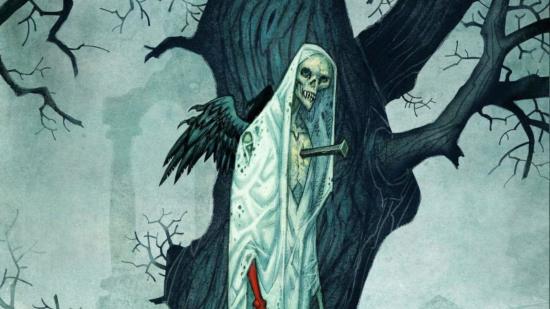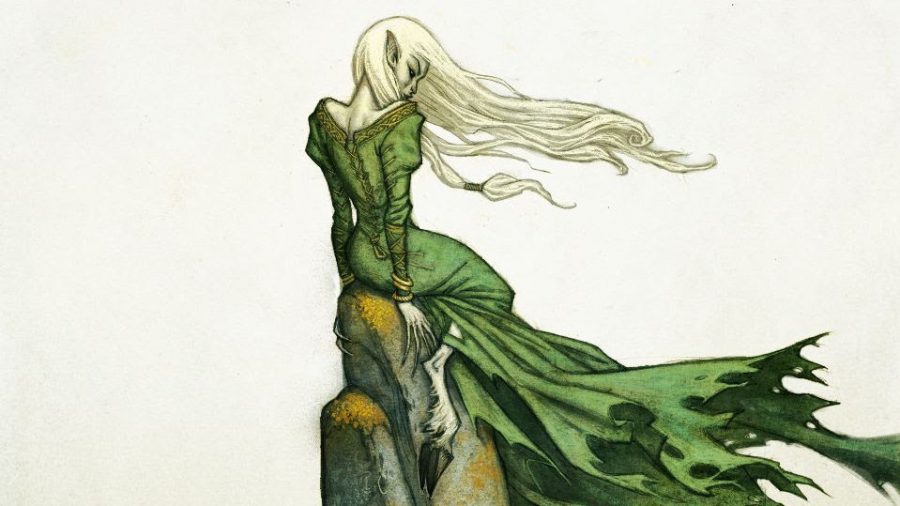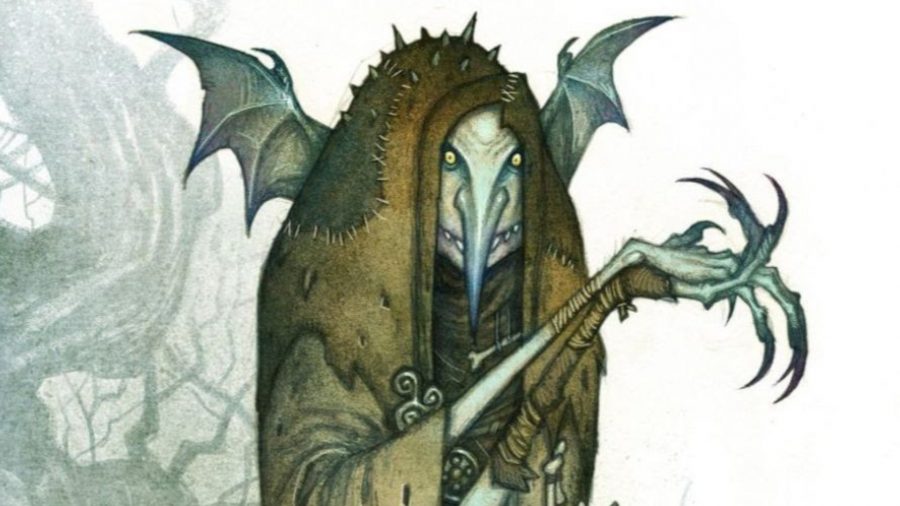Vaesen has made something of a name for itself. Since launching in 2020, the self-styled “Nordic horror roleplaying game” has carved out a niche among fans of mystery monster-hunting adventure. Mixing sinister folkloric whimsy with shrewd investigation, it’s a tabletop RPG as interested in discovering the monsters of Scandanavian myth as it is in hunting the beasts to oblivion.
And now it’s coming to the British Isles. Launched on Kickstarter last week, Vaesen: Mythic Britain and Ireland transports the game from the forests and towns of Scandanavia to the cities and backwaters of England, Wales, Scotland and Ireland. Introducing a new setting to play through, another batch of monsters to fight, and three pre-written adventures, the sourcebook continues the Vaesen experience in a new geographical setting.
We sat down with Mythic Britain and Ireland writer Graeme Davis to find out more about the folklore we can expect in the upcoming book, what makes the British Isles fertile ground for horror, and tips for running investigative adventures on the tabletop. Mythic Britain and Ireland is crowdfunding on Kickstarter now.
The original Vaesen was based on Nordic folklore and Scandinavian myths. What myths and legends of the British Isles does this new book draw from?
Graeme Davis: British and Irish folklore is a huge topic (arguably at least four separate topics), so I’ve done my best to take a representative sample. I’ve focused on folklore and its creatures rather than myth and legend, because that is where Vaesen’s core lies.
The British Isles is an amalgamation of different cultures and nations, with their own folkloric histories. How does this diversity feature in the book?
It is, and by including Ireland as well (since all of the British Isles were ruled from London in the 19th century) I have tried to do justice to that diversity, as much as I can in a book of this size. I’ve presented creatures from the folklore of all nations, as well as discussing the British and Irish relatives of many creatures from the core rulebook.
Live a little: Read our pick of the best tabletop RPGs
While one of the three mysteries in the book is set in London, the others send the player characters to Wales and rural Gloucestershire, for a variety of surroundings and experiences. And as in the core book, each of the new creatures comes with examples of conflicts so that a group can start playing just about anywhere in the islands.

What makes nineteenth-century Britain and Ireland fertile settings for Vaesen’s style of gothic horror?
I would call it folk horror rather than gothic horror, but that’s a minor quibble. There are so many tensions in society at this time. There is the same conflict between tradition and progress that can be found across Europe and North America as industrialization spreads. There are class tensions, regional tensions, and national tensions as London grows rapidly and comes to dominate the islands – and the world – on a scale not previously seen.
The mass movement of people from the countryside to the cities mixes people and their folk beliefs together as never before. Independence movements are stirring in Ireland, Wales, and Scotland, and the underlying resentments and conflicts may be mirrored in the fey population as well as among the mortals. There is a lot of potential here.
Creating engaging investigative adventures for tabletop RPGs can be challenging. What’s your approach to writing compelling mysteries?
My basic rules are not to overthink, trust yourself, and always keep the players in mind. More than once I’ve started with a basic idea for a situation but no idea of where it will go. Once I start writing, problems and issues arise and are solved, and it all turns out in the end. Most problems can be solved by thinking about what would make the best ‘roleplaying moment’, as I call them – something that will surprise the players, and stick in their memories for months or years to come.
Similarly, do you have any tips for GMs running mystery adventures?
A mystery is not the same as a monster-bash, even if the finale sees the player characters fighting a monster. Not knowing what you’re up against is the most worrying feeling, and the best investigative adventures manage to pace the discovery of clues in such a way that the mystery and tension are stretched out for as long as possible, while keeping players intrigued rather than frustrated.
Cardstock superstars: These are the best board games
Above all, avoid “Aha!” moments where everything falls into place and the players find out all at once what they are up against and how to defeat it. Vital information should be doled out sparingly, one breadcrumb at a time, and the players should have to work to piece it all together. A few red herrings never hurt, either.
Will Mythic Britain and Ireland be introducing any new mechanics to the game?
No. I found while writing that the core system covered everything I needed, beyond inventing a few new powers for certain creatures.
What do you think it is about Vaesen that’s made the tabletop RPG a success?
Well, it certainly doesn’t hurt that the book is gorgeously illustrated by Johan Egerkrans. I defy anyone to see the cover and not want to look inside. Beyond that, I’ve noticed an interest in folk horror growing in the zeitgeist over the last few years. Sometimes the setting is Victorian, like Carnival Row, but there is plenty set in other time periods as well, from the 1970s to the present day. A lot is coming out of Scandinavia, too, on the coattails of the Nordic Noir wave, such as the Netflix series Elves and movies like Midsommar. The time just seems to be right.
What are your favourite monsters introduced in the new book?
That’s a tough question, because I had to be so selective that those in the book represent the best of the best – in my opinion, at least. But if I had to pick just one, it would be the hag. There are so many local variants, and so many ways of looking at them through the lens of folklore and folk religion, and I have never felt that any other game has done them justice.


